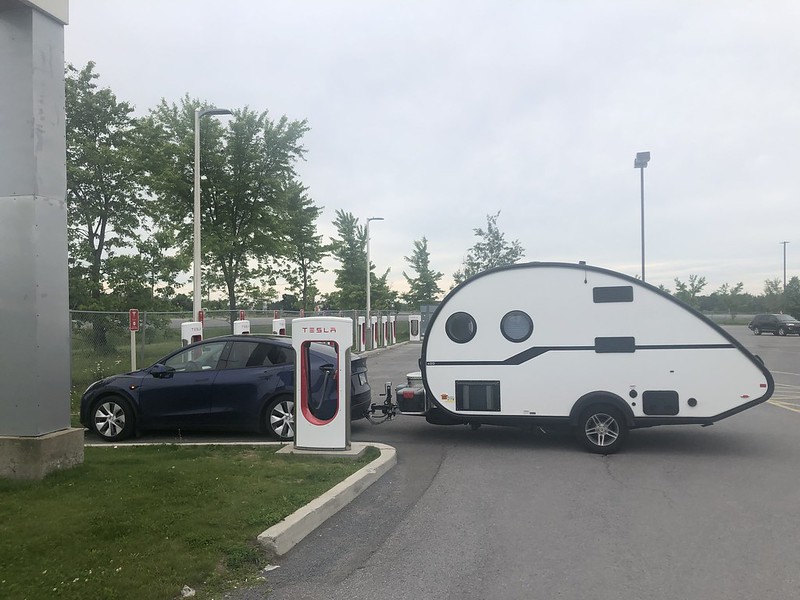Hi folks. As per the title, like many medium sized SUV’s tesla doesn’t recommend using a weight distribution hitch. For that matter our travel trailer manufacture also recommends against it. And to be honest we probably really don’t need one as the car only squats an inch at max. But of course one of the advantages of a weight distribution hitch is the ability to reload some of the weight onto the front axle.
So here comes the advantage of a vehicle with a frunk. (A front trunk). Our frunk isn’t huge but we managed to get about 115 pounds of “stuff” that we carry in there. We essentially selected the densest most heaviest items and put them in there. Tools, axe, various emergency items etc. The hitch weight is 340 pounds. And we carry about 100 pounds of other camping stuff in the back of the car. Little generator, chairs, barbecue etc. Although some of that is actually forward of the rear axle.
Bottom line is we were able to reload the front axle a little bit. The whole combo feels very solid and I’m sure the low centre of gravity of the car helps.
Just a note. For these lighter trailers used commonly behind electric vehicles one can measure their hitch weight by using a big guy bathroom scale. Or use the 1/3 2/3 method with a normal scale. My hitch weighs exactly 140 pounds more than me....except at Christmas. It’s 340 pounds.
It’s 340 pounds.
Anyway, my contribution of the day for the EVers pulling trailers is that they consider loading heavy and dense items in the FRUNK. I’m not an expert on this stuff but it seems to be working pretty good for us.
Happy trails all.
A few pics.
The frunk.

The scale.

The combo.

So here comes the advantage of a vehicle with a frunk. (A front trunk). Our frunk isn’t huge but we managed to get about 115 pounds of “stuff” that we carry in there. We essentially selected the densest most heaviest items and put them in there. Tools, axe, various emergency items etc. The hitch weight is 340 pounds. And we carry about 100 pounds of other camping stuff in the back of the car. Little generator, chairs, barbecue etc. Although some of that is actually forward of the rear axle.
Bottom line is we were able to reload the front axle a little bit. The whole combo feels very solid and I’m sure the low centre of gravity of the car helps.
Just a note. For these lighter trailers used commonly behind electric vehicles one can measure their hitch weight by using a big guy bathroom scale. Or use the 1/3 2/3 method with a normal scale. My hitch weighs exactly 140 pounds more than me....except at Christmas.
Anyway, my contribution of the day for the EVers pulling trailers is that they consider loading heavy and dense items in the FRUNK. I’m not an expert on this stuff but it seems to be working pretty good for us.
Happy trails all.
A few pics.
The frunk.
The scale.
The combo.












